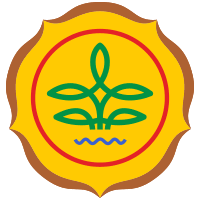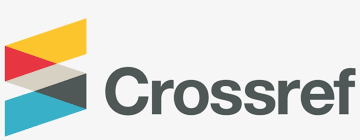Abstract
East Kalimantan has a fairly extensive ex-coal mining area. Continuous mining activities cause severe land damage with a dramatically reduced nutrient. The application of organic farming can be one of the solutions to improve ex-mining land. One of the plants that can be applied is Situ Bagendit Rice. Rice Bagendit varieties are dry land rice which is resistant to pests and blast disease. The use of market waste, MOL golden snail, and Trichoderma. Sp as organic material can increase productivity in Bagendit rice plants there and be able to repair damage to ex-coal mine land. The aim of this study was to compare market waste, MOL golden snail and Trichoderma sp to Bagendite rice plant growth. This study used the RAL method (Completely Randomized Design) with 9 treatments and 3 replications. B0 control (soil without additives), B1 compost market waste and Trichoderma sp with a dose of 100 g/polybag, B2 market waste waste compost and MOL golden snail with a dose of 100 g/polybag, B3 compost market waste and Trichoderma sp with 200 g/polybag, B4 market waste compost and MOL golden snail with a dose of 200 g/polybag, B5 market waste compost and Trichoderma sp with a dose of 300 g/polybag, B6 market waste compost and MOL golden snail with a dose of 300 g/polybag, B7 market waste compost and Trichoderma sp with a dose of 400 g/polybag, B8 market waste compost and MOL golden snail with a dose of 400 g/polybag. The results showed that Trichoderma sp market waste compost fertilizer and golden snail market MOL waste compost each had a significant effect on the productivity of bagendite rice plants. In addition, MOL market golden snail waste compost with the best dosage of 400 g/polybag is able to produce harvested dry grain production of around 2.8 tons/ha.
Keywords
Situ Bagendit rice, compost fertilizer, MOL golden snail, Trichoderma sp solution, market waste
References
Departemen Pertambangan dan Energi Direktorat Jenderal Pertambangan UMUM. 1996. Pedoman Reklamasi Lahan Bekas Tambang. Jakarta
Foth, D. H., 1994. Dasar-dasar Ilmu Tanah. Gadjah Mada University Press, Yogyakarta
Gandjar, I., Robert A.S., Karin V.D., Ariyanti O., dan Iman S., 1999. Pengenalan Kapang Tropik Umum. Yayasan Obor Indonesia. Jakarta.
Hanafiah, K. A. 2005. Dasar-dasar Ilmu Tanah. Raja Grafindo Persada. Jakarta
Hardjowigeno, S. 2003. Ilmu tanah. Akademika Pressindo. Jakarta
Indriani, Y. H. 2003. Membuat Kompos Secara Kilat. Penebar Swadaya. Jakarta
Khairul, U., 2001. Pemanfaatan Bioteknologi untuk Meningkatkan Produksi Pertanian. dalam Makalah Falsafah Sains (PPS 702) Program Pasca sarjana/S3 Institut Pertanian Bogor,November 2001.
Kurnia, U., dkk., 2006. Sifat Fisik Tanah dan Metode Analisisnya. Balai Litbang Sumberdaya Lahan Pertanian
Manurung, S.O. and M. Ismunadji. 1988. Morfologi dan Fisiologi Padi. Balitan Pangan Bogor. 319 hal.







4.jpg)
.jpg)











